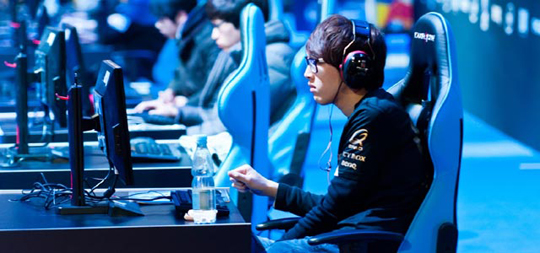Washington, Nov 5: Playing games on internet is not as addictive as gambling, says a new study.
The study by Oxford University is the first of its kind that has tried to measure the scale of gaming addiction in the general population using symptoms of 'internet gaming disorder' as defined by the American Psychiatric Association (APA).

Researchers from the University's Oxford Internet Institute asked nationally representative samples of men and women in four countries how they felt after gaming using the APA checklist of health symptoms.
The study investigates concerns voiced recently by the APA about a lack of good quality research into the effects of playing internet games.
Researchers from the University of Oxford surveyed 19,000 men and women from the UK, the United States, Canada and Germany. Over half of the sample said they had played internet games recently. Of these, between two and three percent reported they had experienced five or more of the symptoms on the list, with between one percent and half a percent saying they also had feelings of 'significant distress' in being unable to curb their play.
These rates are less than half those reported recently for gambling by the British Gambling Prevalence Survey. In that survey, 2.6 percent of those aged 18-24 and one percent of adults in the general population said they had experienced symptoms linked by the researchers with a gambling disorder.
Two years ago, the American Psychiatric Association outlined the potential problem as 'internet gaming disorder' and proposed nine standard symptoms that might characterise possible diagnoses.
The APA gave each symptom equal weight, and specified there had be an over-riding 'feeling of significant distress'. The Oxford study discusses this as a 'key feature', noting that while many gamers may feel preoccupied and distracted from other responsibilities in a similar way to a sports fan whose team has reached the finals, they are not likely to have a pathological condition unless there are feelings of significant distress.
All the study participants, recruited through YouGov and Google Surveys, completed symptom and health checklists. To be identified as a possible gaming addict, they had to report five of the nine symptoms from the APA list and also feel significant distress. Symptoms included preoccupation with internet gaming, anxiety and other withdrawal symptoms (if the game was taken away), increasing amounts of time spent gaming, loss of control, reduced interests, social withdrawal, and losing opportunities as a result of gaming. Unique to this study was an emphasis on open materials, open data, and a pre-registered data analysis plan.
Study lead author Dr Andrew Przybylski, from the Oxford Internet Institute, commented, "To our knowledge, these are the first findings from a large-scale project to produce robust evidence on the potential new problem of "internet gaming disorder". Internet games are currently one of the most popular leisure activities, but we can't leap to conclusions and assume that if 160 million Americans play them, one million of them might be addicted. Contrary to what was predicted, the study did not find a clear link between potential addiction and negative effects on health, however, more research grounded in open and robust scientific practices is needed to learn if games are truly as addictive as many fear. If clear evidence does emerge, this would have huge clinical significance as treatments for addicted gamers would vie with a range of serious psychiatric disorders in the current climate of limited health service resources."
"There were some striking findings, for instance, we found specific indicators like increasing playtime to increase excitement were reported three times more frequently than other indicators, such as risking social relationships. Importantly, the great majority of gamers - nearly three in four - reported no symptoms at all that we would link with addictive gaming behavior," Przybylski added.
The study has been published in the American Journal of Psychiatry.





Comments
I truly love your blog.. Verry nice colors & theme. Did yoou create this wweb site yourself?
Please reply back as I'm planning to create my very own website and would like to find
out where you got this from or just what the theme is named.
Apprciate it!
Here is my blg ... free slots: https://freeslotswithnodownload.tumblr.com
Add new comment